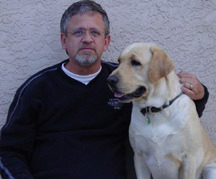|
|
| Organizational strategy for achieving safety, Part I |
| By Gene Atherton, NLECTC - Rocky Mountain - Institutions Program Manager |
| Published: 07/13/2008 |
 Often, the idea of sharing authority really means that the chief of security must negotiate to achieve cooperative behavior from each of the department heads across the institution. The organizational structure is typical when the chief of security and the other department heads of the institution are of equal rank.
Often, the idea of sharing authority really means that the chief of security must negotiate to achieve cooperative behavior from each of the department heads across the institution. The organizational structure is typical when the chief of security and the other department heads of the institution are of equal rank.Under those conditions, for example, the head of the department of education decides that teachers can retain long, pointed scissors in their desks without following security procedures for keeping them secure. Before it can be discovered by the security compliance procedures, an inmate steals a pair of scissors and uses it in an assault causing serious injury. In numerous other areas of the institution, similar scenarios can occur such as in the vocational shops, maintenance work spaces, the kitchen, and medical services. The serious incident can be traced to a difference of opinion among leaders at the institution. The rest of the staff may all provide lip service to the idea that “security is everybody’s job,” but unless the chief of security is the greatest politician in the world, the outcome typically is that all department heads have their own view of the importance and nature of security systems. When those views differ from those of the security chief, the differences in attitude are reflected in the behavior of subordinates in the institution. This can, and often does, lead to confusion and ineffective performance and response among staff, which translates to weaknesses in security and lack of safety within the institution. On much large scale, similar dysfunctions across agency lines led to the success of the terrorist attack on 9/11. Leaders in authority did not regard the information concerning terrorist targets in the United States prior to 9/11 seriously enough to mount an effective response; and the information available was not shared effectively across departmental lines.1 The Homeland Security Department is leading the effort to gain effective, immediate response to national threats through integration of the process. State and local agencies must hone their processes to be effective in their responses, as well. Whether it is across a nation or across departmental lines within an institution, the principle is the same. One strategy for success in eliminating divisiveness throughout the correctional institution is operating security and emergency management systems to unify their command and accountability. This system requires that, related to security systems and emergency response, all staff must be correctional workers-administrators, administrative support staff, mental health workers, teachers, and so forth. All of the staff must perform security and emergency management functions, as required. This may mean that under emergency conditions all staff may be required to help serve food, search inmate cells, carry water, or any tasks deemed important to the process. It also means all staff would have clearly defined roles during emergencies, which would be described in policy and taught through realistic training scenarios. (1) 1000 Years for Revenge: International Terrorism and the FBI – The Untold Story, Peter Lance, 2004, Regan Books, an imprint of Harper Collins Publishers. Editor’s Note: Next week, Atherton concludes with more strategies including managing expectations and measuring system performance levels.  Gene Atherton is in his 30th year of service in the criminal justice field. He is currently Institutions Program Manager for the National Law Enforcement and Corrections Technology Center in
Florence, Colorado. He served 27 years for the Colorado Department of Corrections, which included the assignment of Security Specialist from 1992 to 1997, where he developed security and emergency management policy; designed new prisons; established staffing analysis; and created a system for insuring standards in security technology. In 1997, he was Warden at the Buena Vista Correctional Complex, and then became Director of Prisons for the Western Region in Colorado until retirement in 2004.
Gene Atherton is in his 30th year of service in the criminal justice field. He is currently Institutions Program Manager for the National Law Enforcement and Corrections Technology Center in
Florence, Colorado. He served 27 years for the Colorado Department of Corrections, which included the assignment of Security Specialist from 1992 to 1997, where he developed security and emergency management policy; designed new prisons; established staffing analysis; and created a system for insuring standards in security technology. In 1997, he was Warden at the Buena Vista Correctional Complex, and then became Director of Prisons for the Western Region in Colorado until retirement in 2004.Atherton also is president of Correctional Consulting Services Group, and has served as a technical assistance consultant and trainer for the National Institute of Corrections> He is co-author of Use of Force –Current Practice and Policy, Supermax Prisons: Beyond the RockM, Guidelines for the Development of a Security Program, Third Edition, and The Evolution and Development of Security Technology. He can be reached at gatherton@wildblue.net Reprinted with permission from Guidelines for the Development of a Security Program, 2007, American Correctional Association, available from ACA at 1 800-222-5646 or www.aca.org . Other articles by Atherton |
MARKETPLACE search vendors | advanced search

IN CASE YOU MISSED IT
|


Comments:
No comments have been posted for this article.
Login to let us know what you think